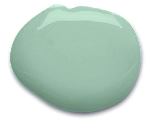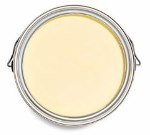Celebrating Morocco's Majorelle Gardens
 October 17, 2011
October 17, 2011  Blue Workshop, Majorelle Gardens
Blue Workshop, Majorelle Gardens Janet Ramin - The deep cobalt blues and contrasting bright lemon yellows that compose the color palette of the Majorelle Gardens appear to have stepped out of a Matisse painting. Every scene, every vista, everywhere you look could be the setting of an unforgettable painting. The Majorelle Gardens were the brainchild of French artist Jacques Majorelle, a contemporary of Henri Matisse. Majorelle envisioned a green, cool oasis amidst the hot red Marrakesh desert and proceeded to turn a mirage into reality.
Janet Ramin - The deep cobalt blues and contrasting bright lemon yellows that compose the color palette of the Majorelle Gardens appear to have stepped out of a Matisse painting. Every scene, every vista, everywhere you look could be the setting of an unforgettable painting. The Majorelle Gardens were the brainchild of French artist Jacques Majorelle, a contemporary of Henri Matisse. Majorelle envisioned a green, cool oasis amidst the hot red Marrakesh desert and proceeded to turn a mirage into reality.
Despite a fruitful association with Morocco, Jacques Majorelle was not a native of the country, nor did he start his artistic career there. He was born and raised in Nancy, France, of a very artistic family. His father was the famous ebeniste or cabinetmaker, Louis Majorelle. His father helped found the School of Nancy – a group of designers, artists, and cabinetmakers famous for their Art Nouveau style sculptures, glasswork and cabinetry. With this background, Jacques easily moved through French artistic circles, coming into contact with many of the artists of the early twentieth century.
 (Art Nouveau style building)But when he developed tuberculosis, Majorelle was forced to move to sunnier climes, first stopping in Spain, then eventually further south, into Egypt and Morocco. This move became a turning point in his artwork – the tribal and desert scenes he encountered became the source for his Orientalist period of work. He painted Bedouin natives and life behind the walled medina.
(Art Nouveau style building)But when he developed tuberculosis, Majorelle was forced to move to sunnier climes, first stopping in Spain, then eventually further south, into Egypt and Morocco. This move became a turning point in his artwork – the tribal and desert scenes he encountered became the source for his Orientalist period of work. He painted Bedouin natives and life behind the walled medina.
 (Casbah by Jacques Majorelle) Majorelle eventually immersed himself with the French community in Marrakesh and by 1919 decided to settle down there. He also began to plan his oasis in the desert, the Majorelle Gardens.
(Casbah by Jacques Majorelle) Majorelle eventually immersed himself with the French community in Marrakesh and by 1919 decided to settle down there. He also began to plan his oasis in the desert, the Majorelle Gardens.
 Jacques Majorelle,
Jacques Majorelle,  Morocco,
Morocco,  art nouveau in
art nouveau in  architecture,
architecture,  art,
art,  color,
color,  outdoor
outdoor 






































